13 Vintage Art Deco Clocks Collectors Love for Their Style
Art Deco clocks bring a sense of timeless elegance to any room with their sleek lines, geometric shapes, and polished finishes. These clocks first gained attention in the 1920s and 1930s, reflecting the artistic flair of the Jazz Age. Many were made from luxurious materials like chrome, marble, and glass that still feel stylish today. Each piece tells a story about how design and innovation shaped that era.
This post may contain affiliate links, which helps keep this content free. Please read our disclosure for more info.
English 8‑Day Walnut Wall Clock (c.1930)
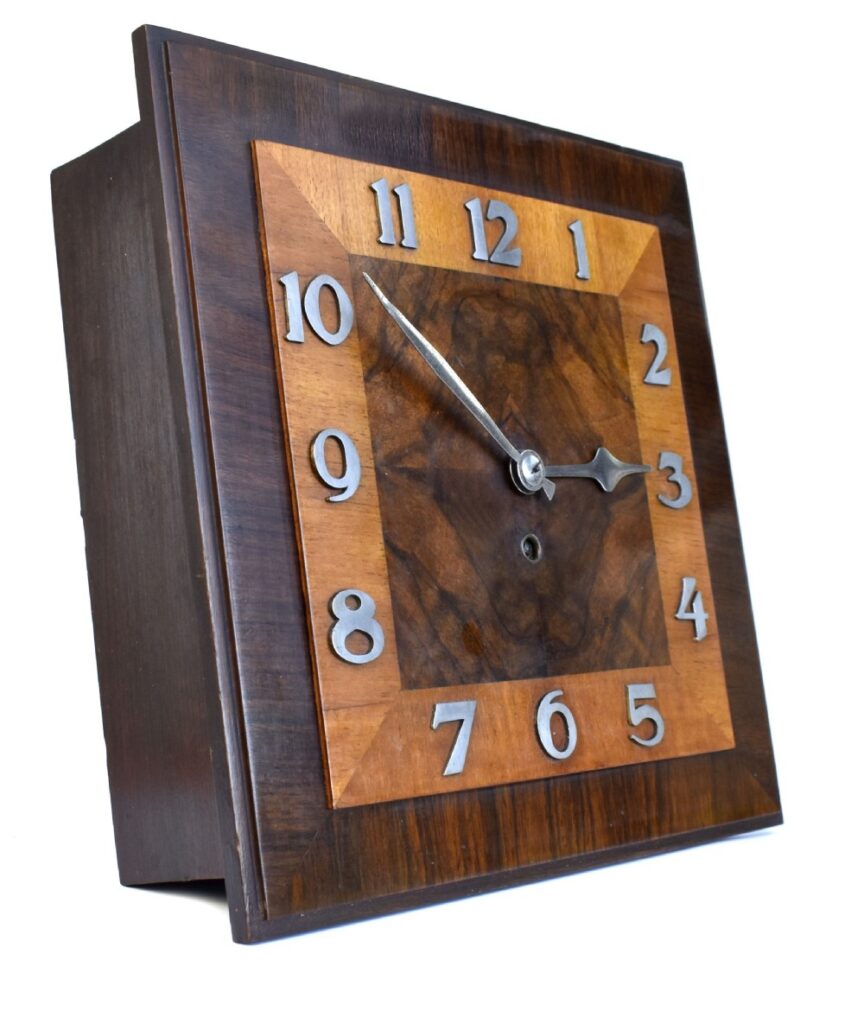
It was made around 1930 in England and is built with a walnut case and Art Deco styling in the hands and dial. Collectors admire its combination of traditional wood craftsmanship with Deco era motifs (stepped forms, streamlined numerals). In good working condition, a clock like this might fetch between $800 and $1,500 on the open market today. The 8-day movement means it needs winding only once a week, which is quite practical. Because wall clocks of that age often suffer from wear, finding one with original dial and minimal damage boosts its appeal.
Unlike many mantel clocks, this piece stands out for its size and presence on a wall. The walnut veneer sometimes shows subtle chevron or veneer patterning, which adds decorative interest. Replacement parts for this make are available among vintage clock parts dealers. If original glass, hands, and pendulum survive, the value edges upward. Buyers often factor in restoration costs when negotiating.
Verler Pelican Model Clock Stand
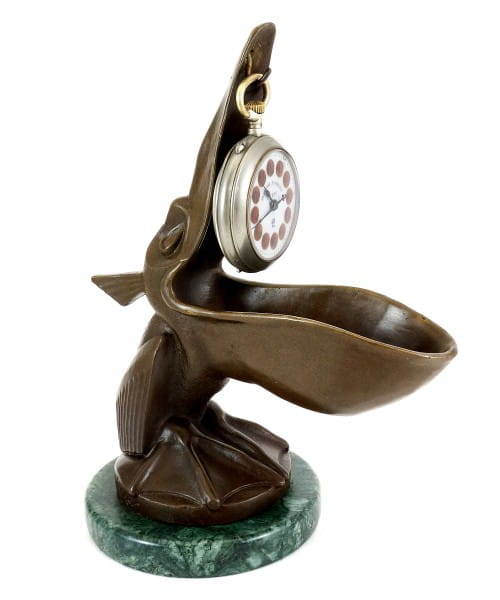
This is a sculptural item, made in the mid-1930s, combining a clock face with a decorative bronze stand in the shape of a pelican (signed Verler). It’s appealing because it melds animal figure sculpture with functional timekeeping, an unusual crossover piece. Today, similar pieces might command $1,200 to $3,000 depending on condition and originality. The patina of the metal, the crispness of the figurative work, and a working movement all matter. Collectors looking for pieces that make a statement often favor clocks like this as focal items.
The clock movement itself may have been serviced or replaced over time, so verifying it is original adds confidence. Because it is partially sculptural, shipping and handling are more delicate. Its uniqueness means fewer comparable sales, so provenance or cataloged history helps support the asking price.
Art Deco Desk Clock
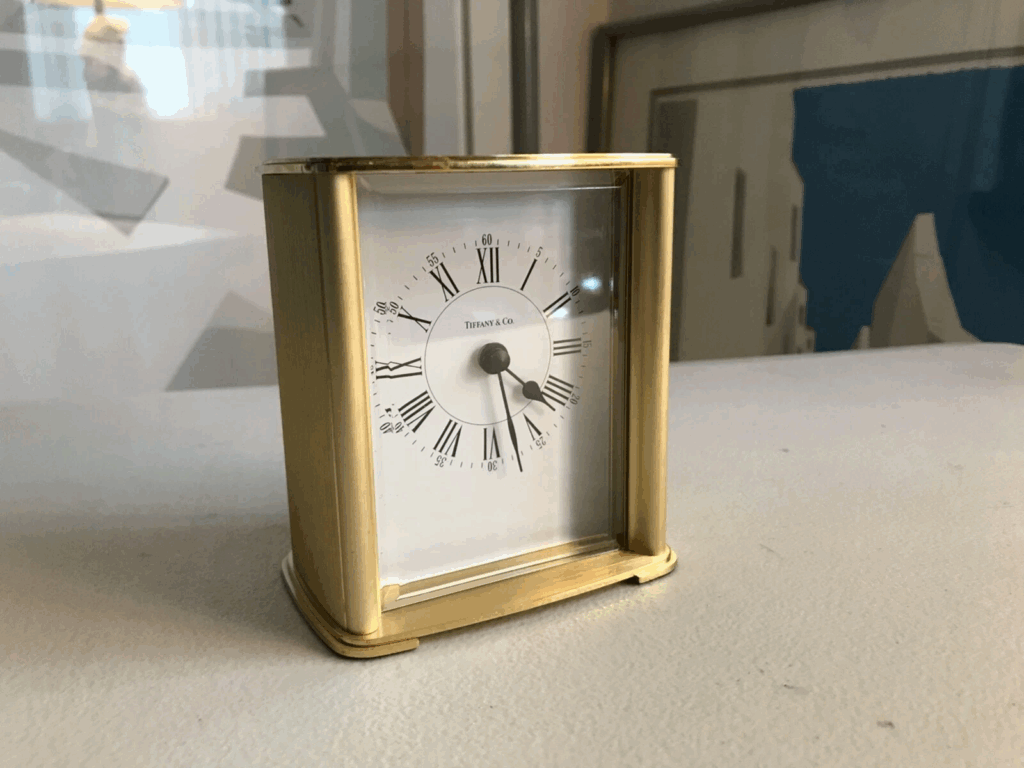
This example probably dates to the 1930s and was designed for use on a desk or small table. What draws collectors is the clean profile, the streamlined feet or base, and the clarity of the dial (often with bold numerals). A desk clock like this might command $300 to $1,000 today, subject to how original its movement, glass, and case are. It is easier to display and care for than larger clocks, giving it a practical advantage.
Because desk clocks are more compact, they sometimes survive better than larger clocks. But they also face more risk of damage (dings, broken glass) over the years. Replacement movements or dials may exist in the vintage clock parts market, but matching the original style is key. Collectors often prefer clocks that still run without heavy servicing.
Generic Art Deco Clock
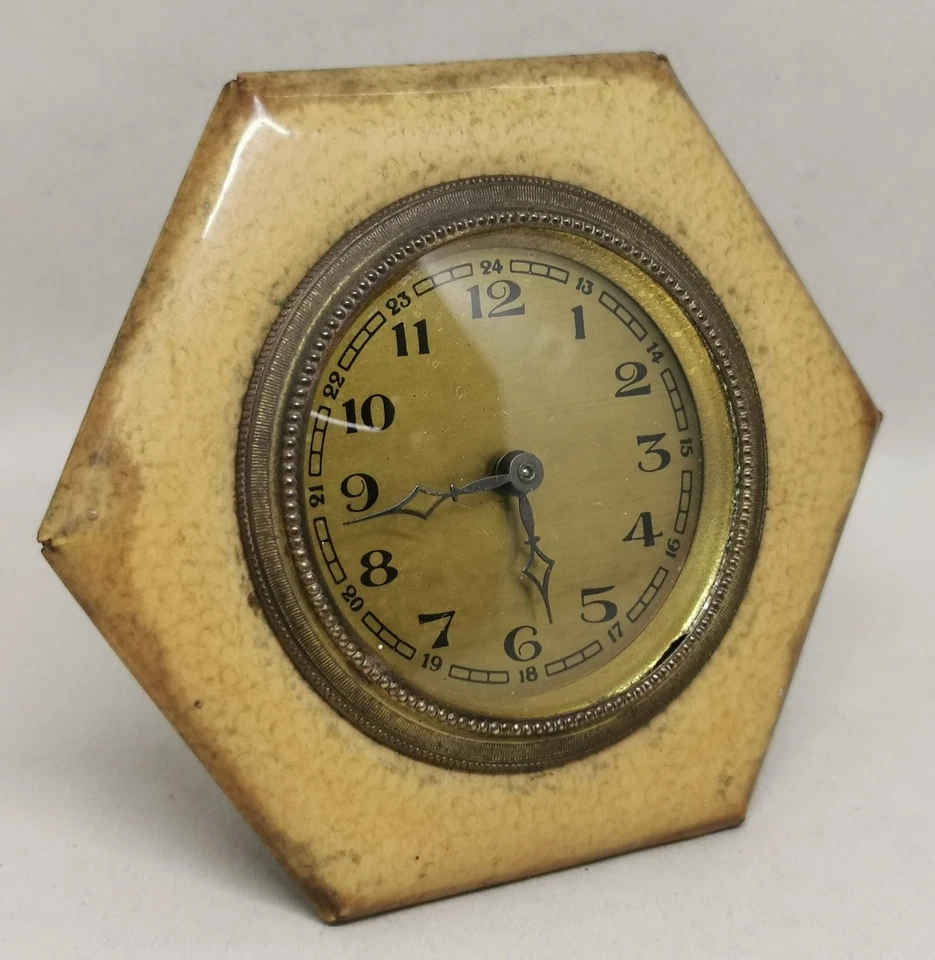
This is a representative example of a mantel or shelf clock made in the 1920s or 1930s with Deco lettering and form. It showcases the classic stepped or geometric case, possibly with metal accents. Its market value in modest condition might be in the range $150 to $500, though rarer variants or good condition ones could be more. What makes it liked is that it embodies the aesthetic of the movement in a broadly recognizable form.
Many such clocks survive in varying condition, so those with preserved original finishes, uncracked glass, and intact numerals tend to do better. Because these are common in the market, condition and brand help separate the average from the desirable. Some clock dealers include these as entry point Deco pieces for new collectors.
Art Deco Sunburst Big Bang Clock
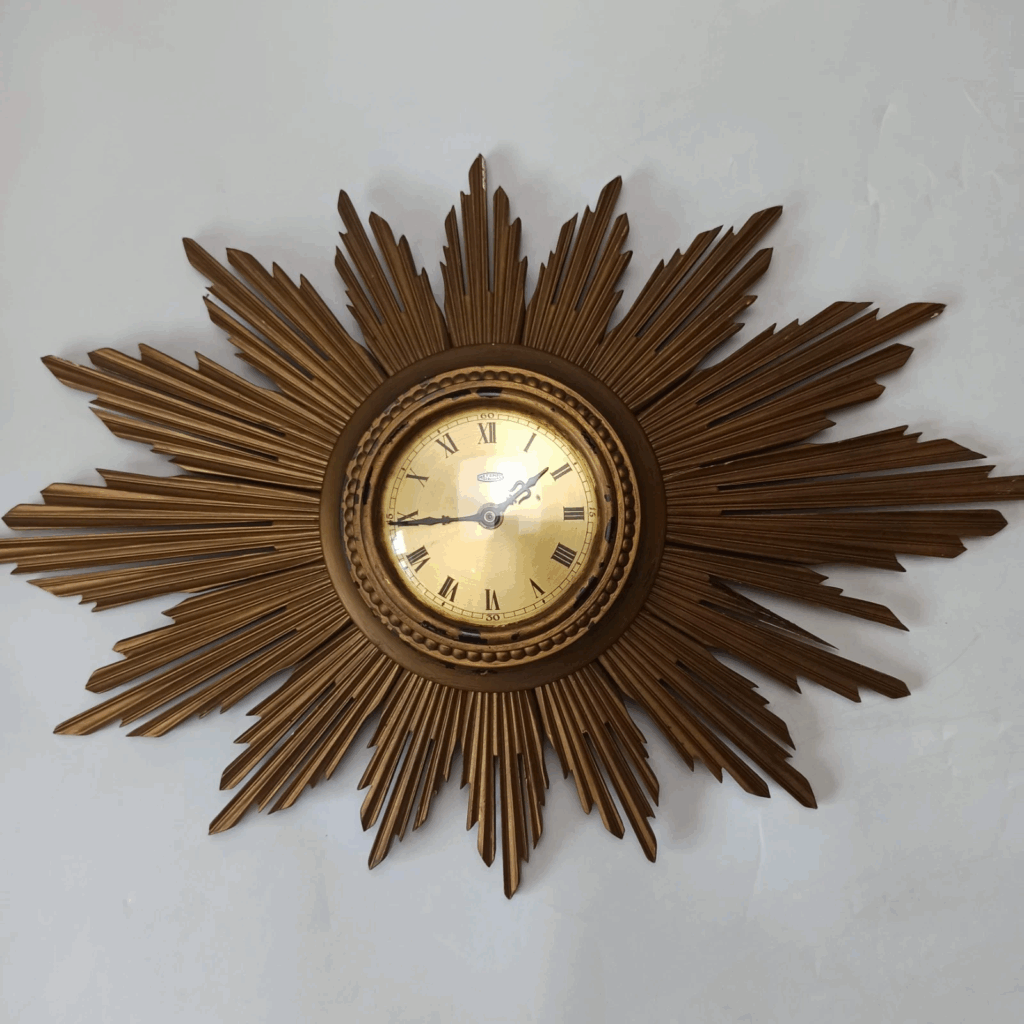
The sunburst motif was popular in the late 1920s and 1930s, and this model plays on that by using radiating metal spikes and a stylized center. Collectors enjoy it for its decorative flair and how it captures the drama of Deco design. Today, a well-made version might bring $400 to $1,200, depending on condition and materials used (brass, chrome, etc.). Because many of these were mass-produced, originality (no repainting or substituted parts) matters a lot.
Placement often is on a wall or mantel where the rays can be seen. Slight bending or misalignment of rays can hurt the visual impact, so condition is critical. If the original movement is retained (even if cleaned) it adds value. Buyers sometimes seek matching clocks or decorative items to form a coordinated display.
Jaeger-LeCoultre Marina Clock
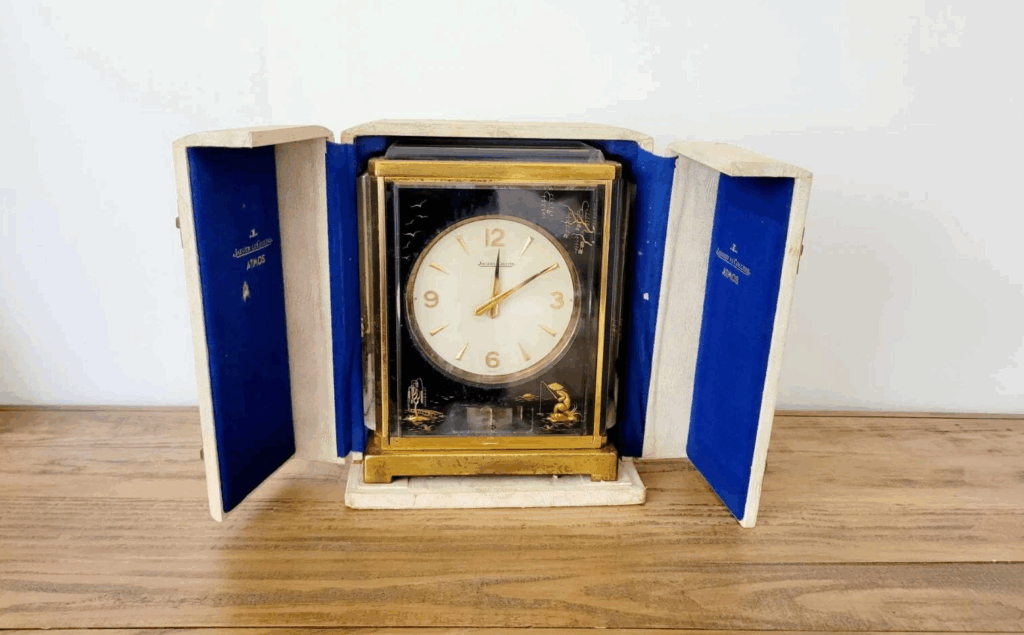
Introduced in the mid-1930s, the Jaeger-LeCoultre Marina Clock is a beautiful example of Art Deco elegance blended with expert watchmaking. Its design often features a glass panel etched with marine scenes, supported by a gilt or chrome base. Collectors value this clock for its fine details and quality construction that set it apart from simpler designs of the same era. In good condition, a Marina Clock can be valued between $2,500 and $6,000. Each one carries the refined craftsmanship that Jaeger-LeCoultre became known for.
These clocks often appeal to both timepiece enthusiasts and lovers of decorative art. The glass panels sometimes show slight etching variations, which make each one a little different. The clock movement, when fully serviced, keeps excellent time for its age. Owners often display them in living rooms or offices as conversation pieces. The blend of clear glass and gilt metal adds a sense of light and glamour.
Telechron Imperial Clock
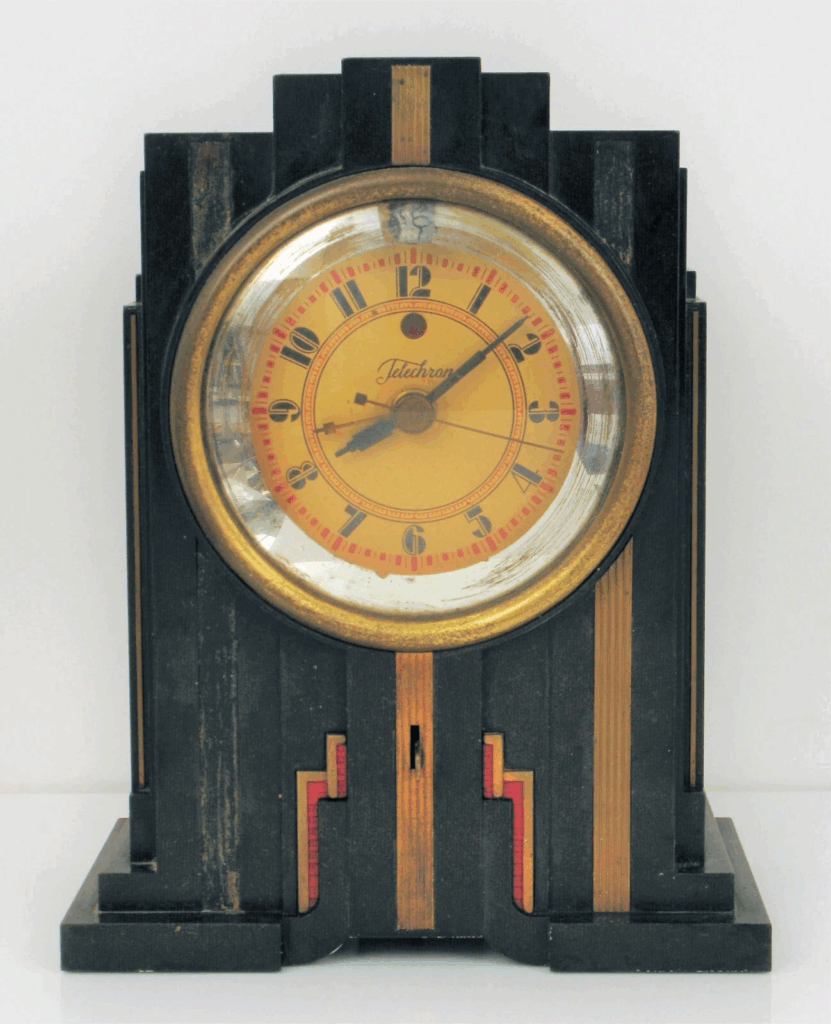
Released in the early 1930s, the Telechron Imperial was an American-made electric clock that became a household favorite. Its symmetrical case, chrome details, and bold numerals reflected the Art Deco aesthetic perfectly. Collectors enjoy its balance between functionality and visual appeal, especially with its gentle red indicator that signaled power loss. A working example in fine condition can sell from $400 to $900. The brand’s reliable electric movements make these pieces practical for display even today.
Many collectors appreciate Telechron clocks for their place in design and technology history. Because they ran on electric motors rather than winding mechanisms, they represented modern living during the Deco period. Restored versions with original cords and dials are more valuable. Some variants included glass or Bakelite accents that enhanced their appeal. These clocks remain a popular entry into Art Deco collections.
Cartier Mystery Clock
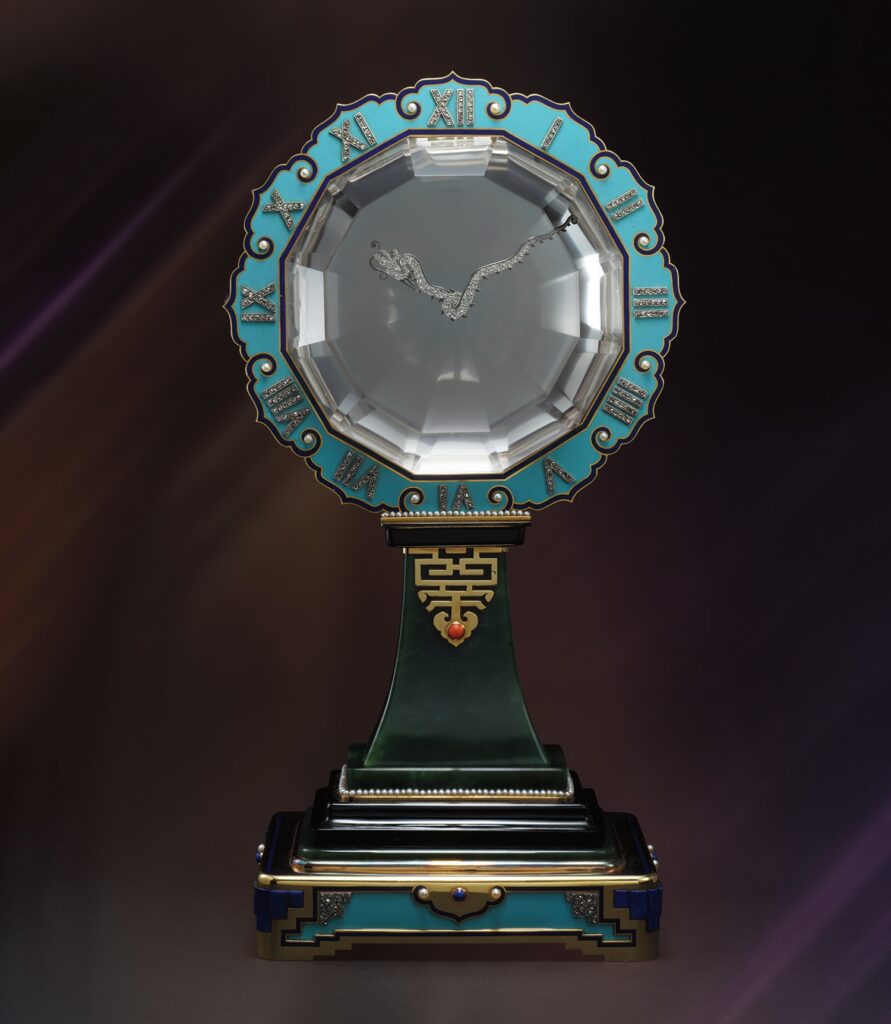
The Cartier Mystery Clock, created in the 1920s, is one of the most luxurious Art Deco timepieces ever made. Its name comes from the way the hands appear to float in mid-air with no visible connection to the movement. This technical marvel, designed by Maurice Couët for Cartier, is considered a masterpiece of Art Deco engineering and design. Depending on its materials and gemstones, it can range from $100,000 to over $1 million. Each example is handcrafted, making every clock unique and historically significant.
Collectors consider the Mystery Clock a symbol of fine artistry and innovation. Many are built with rock crystal, onyx, and mother-of-pearl, with precious metals framing the case. Museums and private collectors often feature them as showpieces. Because of their rarity, they appear only occasionally in auctions. Their timeless elegance keeps them among the most admired pieces in decorative horology.
Junghans Mantel Clock
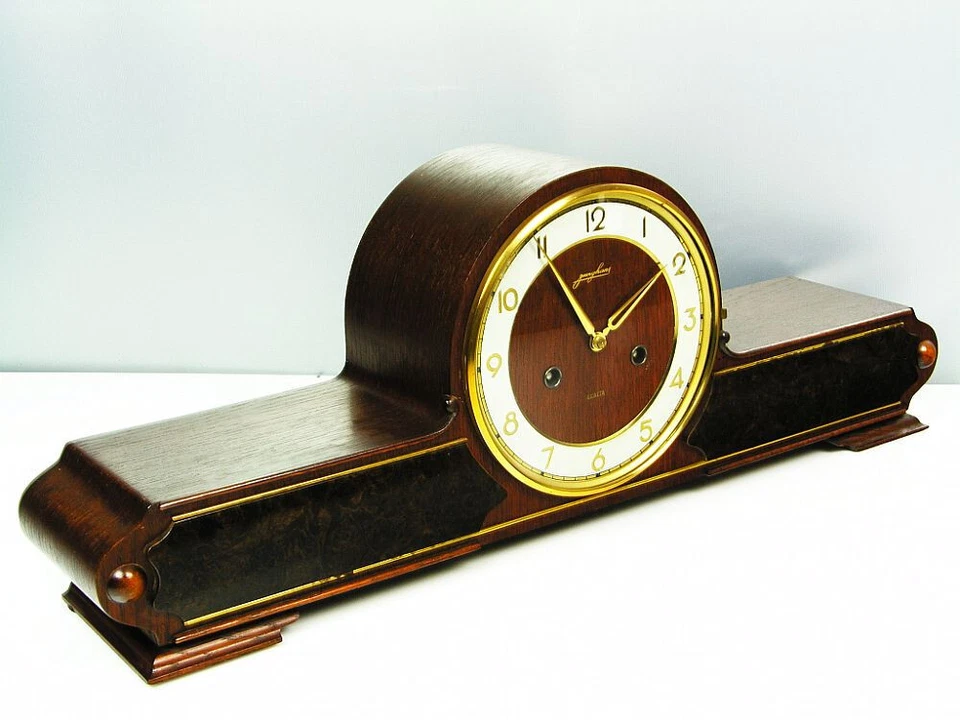
Produced in Germany during the 1930s, the Junghans Mantel Clock showcases sleek lines and minimalist design that perfectly fit the Art Deco period. Its wooden casing, often accented with chrome or Bakelite, gives it a balanced look that collectors appreciate. Most models use an 8-day mechanical movement that is still repairable by skilled horologists. A well-preserved Junghans Mantel Clock can sell for $500 to $1,200. These clocks are widely admired for their reliability and stylish appearance.
The brand’s reputation for quality ensures that many Junghans models remain in working condition today. Collectors look for versions with the original dial and company logo intact. Because production numbers were relatively high, condition and originality greatly affect value. The Deco-inspired numerals and simple elegance make it a versatile addition to any vintage décor. Its subtle design allows it to blend with both modern and period interiors.
Bayard Airplane Clock
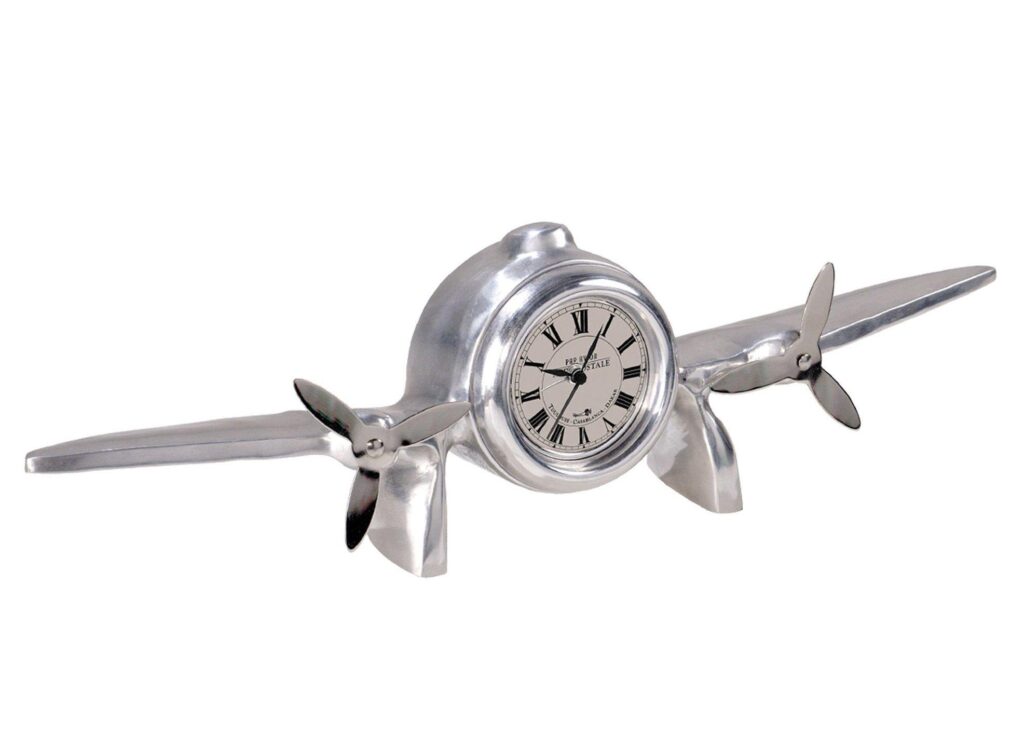
Released in France in the early 1930s, the Bayard Airplane Clock stands out with its playful aviation theme. The clock face sits between small metal propellers, turning an everyday object into a stylish decorative item. This whimsical yet elegant design captures the excitement of the early aviation era and the geometric balance of Art Deco style. Collectors can expect prices between $600 and $1,200, depending on rarity and finish. Many surviving pieces are displayed in libraries or studies as conversation starters.
The Bayard brand gained recognition for producing imaginative and functional designs. These clocks are particularly favored among those who collect travel or transport-themed items. Some feature enamel details or nickel plating that adds to their charm. Because of their small size, they are easy to display on shelves or desks. A well-maintained original movement can still keep time accurately today.
Seth Thomas Streamline Mantel Clock
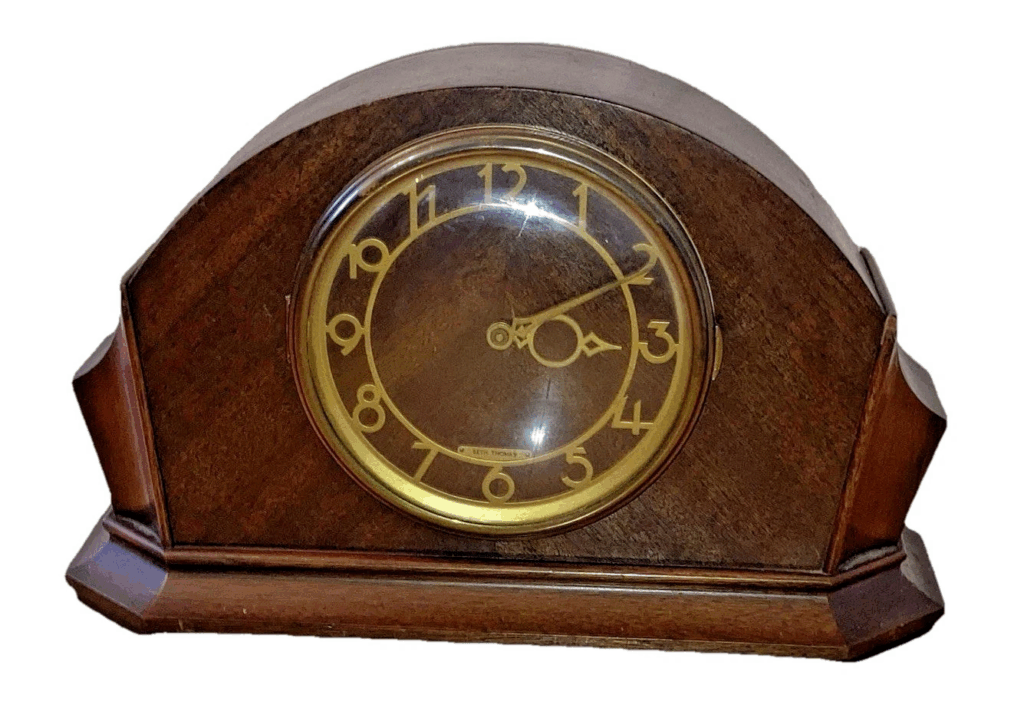
This American-made model from the mid-1930s captures the smooth symmetry that defined the Streamline Moderne movement, an offshoot of Art Deco. Its gently curved wooden case and metal trim create a sense of motion even when standing still. Collectors admire it for its craftsmanship and for representing the transitional style between traditional and modern design. A functioning example can fetch between $300 and $700. The clock’s quiet ticking adds a nostalgic feel to any room.
Because Seth Thomas was a respected manufacturer, these clocks were produced in various case materials. Versions with chrome or bakelite features are more sought after. Many owners keep them as working pieces since they are sturdy and serviceable. Their timeless charm makes them appealing to both decorators and vintage enthusiasts. These clocks continue to hold their place as examples of dependable Art Deco design.
Tiffany and Co. Bronze and Enamel Clock
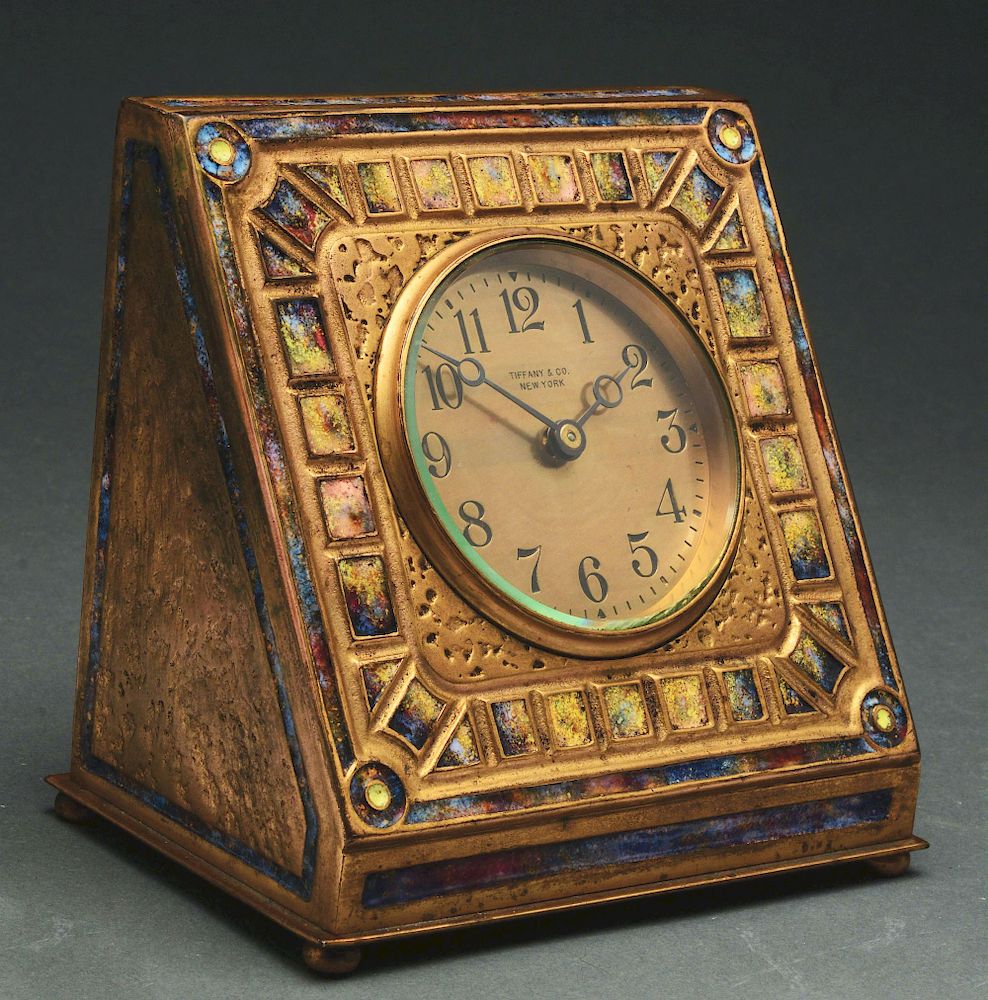
Dating from the late 1920s, this Tiffany and Co. desk clock combines elegance and artistry in a compact design. Its bronze body and richly colored enamel inlays display the craftsmanship that made Tiffany a household name in luxury goods. Collectors value it for its refined simplicity and connection to a prestigious maker. Depending on rarity and enamel quality, such a clock can range from $4,000 to $10,000. The Tiffany signature adds a strong sense of authenticity and desirability.
Owners often place this clock as a statement piece in office or study settings. The blend of materials reflects the decorative art movement of its time. Surviving examples with intact enamel and functioning mechanisms are prized in the auction market. Because each piece was handcrafted, no two are completely alike. This combination of brand heritage and artistic detail keeps them in strong demand.
New Haven Moderne Electric Clock
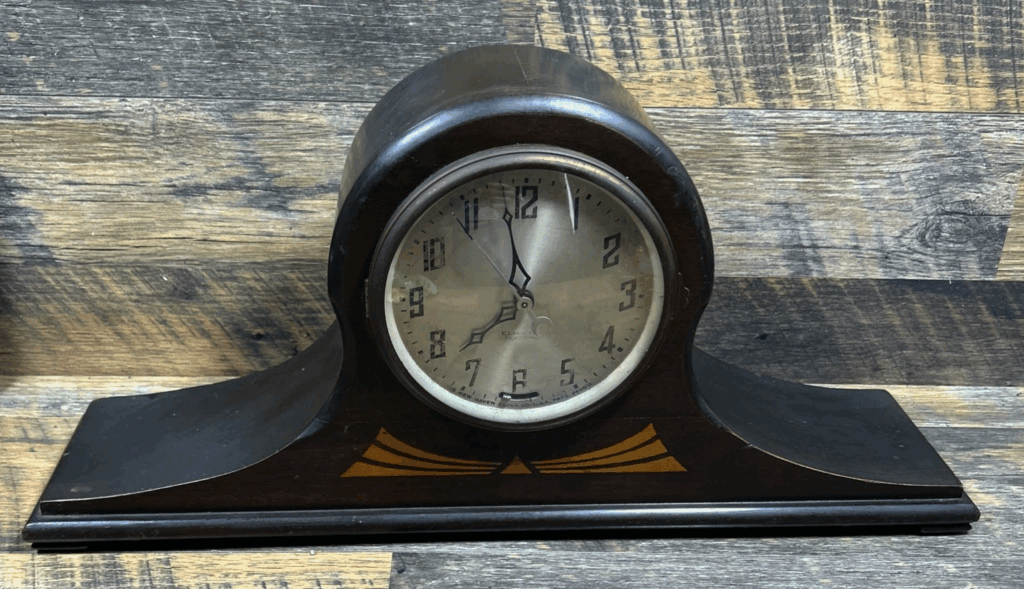
Produced in the United States during the 1930s, the New Haven Moderne Electric Clock embodies sleek Deco design with its rectangular metal casing and mirrored dial. It represented progress during a time when electric clocks were still considered advanced household accessories. Collectors enjoy its polished surfaces and chrome details that reflect the optimism of its era. A working example generally sells between $250 and $600. Many of these clocks still operate today with minimal maintenance.
The clock’s mirrored face was a distinctive feature that added both style and brightness to interiors. Models with the original cord and unpolished metal finish fetch better prices. The brand’s wide distribution made it accessible yet fashionable. Because these clocks are easy to display, they remain popular among new collectors. Their geometric symmetry captures the essence of 1930s American design.
This article originally appeared on Avocadu.
